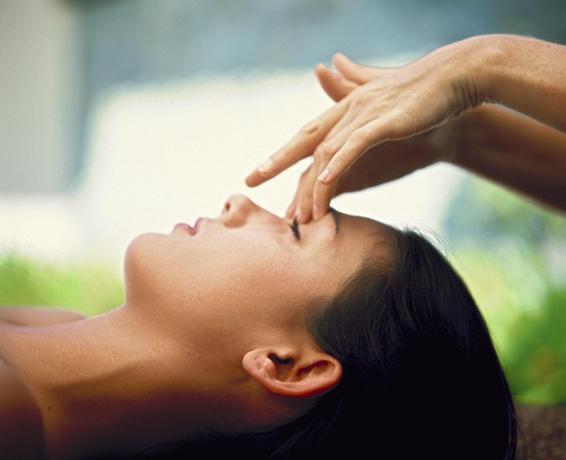
I started studying energetic healing almost 20 years ago now. When I first began all of my learning was self-study and experimentation. I got great results on many occasions, but healing sessions always left me tired and in some cases exhausted. It took me a long time to realize this was not normal and that I was giving away my own personal Qi (energy or life force). I quit doing healing work after one particularly draining session that left me so exhausted I didn't recover for several weeks. I knew without being told that this was the wrong way to approach it and that I needed more hands-on guidance.
When the student is ready the teachers appear.
Evidently it took me some time to be ready because the span between my last exhausting .jpg?width=230&height=263&name=master_li_junfeng_(4).jpg) healing session and meeting my teachers was more than 10 years. I enrolled in the master’s program AOMA and started taking Master Li Junfeng's Medical Qigong 1 class. I have to be honest: I hated that first term learning Return to Spring Qigong. I whined, I complained, I griped about how this wasn't learning to heal and was a general pain in the butt for several months. I vowed I was never coming back to his classes, but something kept tugging at my heart and I knew I needed to sign up for Medical Qigong 2.
healing session and meeting my teachers was more than 10 years. I enrolled in the master’s program AOMA and started taking Master Li Junfeng's Medical Qigong 1 class. I have to be honest: I hated that first term learning Return to Spring Qigong. I whined, I complained, I griped about how this wasn't learning to heal and was a general pain in the butt for several months. I vowed I was never coming back to his classes, but something kept tugging at my heart and I knew I needed to sign up for Medical Qigong 2.
I honestly believe Medical Qigong 2 saved my life. My mother-in-law came to live with us that term and she was gravely ill. It took several months to establish home care for her so during that time my girlfriend and I were watching her around the clock. I was extremely sleep deprived and my stress level was a 12 out of 10. Sitting down during that once per week 3-hour class to do the Heart Spirit as One Qigong form was the only time that was just mine and I treasured it. The meditations we did in class opened my heart and my eyes. I went on to Medical Qigong 3 and then audited all of the classes over again several times.
At some point during the Medical Qigong classes I met Barbara Biro who invited me to her Reiki 1 class. I found that the Reiki principles were very similar to what I was learning in Medical Qigong and that the two reinforced and enhanced each other.
Reiki versus Medical Qigong
Reiki ('rei' meaning universal and 'ki' which is the Japanese pronunciation of 'Qi') and Medical Qigong have the same root philosophies - the concept that the Qi which animates and enervates everything in this Universe can be directed through the practitioner in such a way that the Qi which flows to the patient can to effect a healing and balancing response in the patient’s body. Master Li emphasized that you let the Qi flow through you so that you are both a recipient of healing and a channel for it. Reiki teaches the same concept, highlighting the need to let Qi flow through the Crown chakra, into the heart and out through the minor chakras in the palms. This profound yet subtle tidbit of information was vital to my own progression as a provider of healing energy and was the piece I had been missing early on in my studies. This is also why it is vital to have a teacher to help you open your own channels so that the Qi of the Universe flows through you: there are things you just can't learn from publications or from the internet.
The differences between the two are small in many ways and yet significant.
Medical Qigong
.jpg?width=239&height=216&name=cureville_clinic_2008_(2).jpg) Medical Qigong is one of the oldest branches of traditional Chinese medicine, predating acupuncture by thousands of years. Medical Qigong includes specific physical movements, breathing techniques, and mental imagery that direct the Qi within the body. Ultimately, the practitioner can control the Qi externally to heal others. In China medical qigong is used in hospitals to treat many ailments including tumors, cysts, paraplegia and hemiplegia, muscular atrophy, stress and insomnia, immune deficiency disorders, migraine headaches, and pain.
Medical Qigong is one of the oldest branches of traditional Chinese medicine, predating acupuncture by thousands of years. Medical Qigong includes specific physical movements, breathing techniques, and mental imagery that direct the Qi within the body. Ultimately, the practitioner can control the Qi externally to heal others. In China medical qigong is used in hospitals to treat many ailments including tumors, cysts, paraplegia and hemiplegia, muscular atrophy, stress and insomnia, immune deficiency disorders, migraine headaches, and pain.
There are hundreds of forms of qigong and many ways to teach medical qigong, so let me say a few words about Master Li and my training. Before teaching qigong and medical qigong, Master Li was a world-renowned martial arts coach in China and the Philippines. After practicing and teaching wushu for many years he gave up his prestigious career to devote his time to teaching Sheng Zhen Wuji Yuan Gong, the qigong of unconditional love, around the world. So, to say the least, he brings a unique perspective to his teachings.
Master Li emphasizes the need to work on moving your own Qi for quite some time before you can even talk about moving someone else's. It was for this reason that he took us through Return to Spring Qigong in Medical Qigong 1: the physical movements help you learn to move the Qi of your own body.
Medical Qigong 2 was 50% meditation and 50% subtle movement. This is the beginning of learning to move the Qi of your own body with the mind, heart, and intent. We learned Heart Spirit as One Qigong, which helped me learn to move the Qi with my heart and mind with smaller movements. I also learned stamina, how to expand the Qi in my body with my mind and intentions, and how to connect the Universal Qi.
Medical Qigong 3 focused on Nine Turns, a form of Qigong that is all about moving the Qi with intent, directing it without moving a muscle. When you can control Qi in this manner with a quiet heart that reaches out to connect to the Universe, you are then ready to use this Universal Qi to help facilitate healing for someone else.
Reiki
Reiki as compared to Medical Qigong is a strange blend of less stringent, yet more structured training. Reiki training is packaged to appeal to U.S. audience with little time and patience and has that “do it yourself” attitude in many cases. A Reiki Master, who has been through all 3 levels of Reiki, offers the training, often in 1-2 day classes then turns the new practitioners loose on the world. There is no intense training in meditation or in moving the Qi prior to beginning healing sessions and yet it is still a very effective form of healing even in the hands of a neophyte. That said, I see terrific benefits in Reiki.
Attunements
Reiki has an initiation process called the attunements. The power of these attunements is unmistakable. Once you feel them you know something profound has happened to you even if you don't understand the full implications of them at the time. A Reiki Master gives four attunements during the course of a Reiki training level.
During an attunement the Reiki Master opens the initiate’s Crown chakra and embeds healing symbols into the energetic fields. These act like filters through which the Universal Ki flows during a healing session. I think of them sort of as a stencil or lens, which focuses the Universal Ki into a certain pattern which promotes healing for the recipient.
Opening to Spirit
Another Reiki emphasis is that we are *instruments* of healing, but we are not the healers. We have no abilities to heal - our job is to be a good conduit for healing energy and to be available to Spirit. We are, before anything else, faithful servants to the Universal Ki. This is very similar to Medical Qigong and reaching to connect with the Universal Love. When you do this, you really can't go wrong. Qi is filtered through you on a one-way street. You never feel depleted because it isn’t your own Qi you are giving away. You are also in far less danger of feeling the effects of someone’s “bad energy” because Qi only flows one way – from the Universe to the practitioner then out from the practitioner to the patient. An additional benefit to this is that the practitioner also gets a dose of healing. I feel energized and balanced after I give a Reiki or Medical Qigong session for this reason.
Structured patterns for treatment
This is something I really appreciate about Reiki that I didn't get from Medical Qigong. Reiki offers the new practitioner very structured patterns to follow during a healing session. I used them very faithfully at first, then found, as I got more familiar with my own intuition that my healing sessions became much more free form. But that initial "safety blanket" was extremely comforting and gave me something solid to lean on until I was able to stand on my own.
Guides
Master Li spoke of Masters such as Quan Yin, Lao Tsu, Jesus, Hanuman, and Mohammed coming to him to give him new forms of Qigong to bring to humanity. Dude gets the big guns for sure! Reiki speaks of meeting your own guides. During my Reiki training sessions I was taken through a guided meditation in which I met my non-corporeal Reiki Master to whom I still go for guidance. I was taught how to find this Master and how to approach “him” (“he” doesn’t really have a gender, but has a definite masculine energy). I met my Reiki guides as well, many of whom will rotate in and out of my healing sessions depending on the abilities and energies needed by my patient at that moment.
Reiki levels and symbols
There are distinct levels of Reiki. Reiki 1 emphasizes hands-on healing and requires light physical touch or very, very near proximity to the patient to send healing energy. Reiki 2 teaches practitioners the art of distance healing and greatly boosts the level of Qi that can be channeled by the practitioner. Reiki students in the 2nd level learn to use specific symbols to boost focus the flow of Qi and to send Reiki over distances great and small. Reiki 3 is the Master/Teacher level. Students at this level learn the attunement process as well as the Master symbol which is used to attune/initiate others into the various levels of Reiki.
Once the symbols are embedded in a practitioner’s energy field they are there for life (maybe longer since certain types of energy carry over from incarnation to incarnation), even if the recipient doesn’t use them for a very long time.
Gratitude
Reiki places a strong emphasis on gratitude for those who came before us – our energetic ancestors. Part of the Reiki training is learning and reciting the lineage as much as possible, thanking these ancestors for passing the gift of Reiki on to us. This has shaped my thinking about healing quite a lot. I begin each day by saying thank you to Mikio Usui Sensei, the man who brought Reiki to us, to Masters Hayashi, Takata, and Furomoto. I thank Barbara Biro for taking the time to teach me even when I was skeptical and rolling my eyes over the seemingly new agey-ness of it all. Over time I have found I was including Master Li, Dr. Yuxia Qiu, Dr. Qianzhi Wu, and Dr. Yan He (and most recently Dr. Mikio Sankey) who have taught me things about Qi and transmitting Qi that I could not have learned without them. My heart is filled with gratitude to my teachers every day and I send them healing and blessing often.
Doing this puts me in a terrific mood and has the side effect of making me a better practitioner and conduit for Universal Ki/Love. It’s a great Qi cleanser!
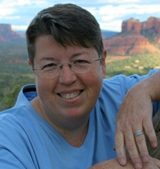 About the author:
About the author:
As the owner of Calhoun Acupuncture & Wellness in Austin, TX, Catherine Calhoun maintains an active clinical practice treating patients with conditions such as pain, allergies & respiratory infections, and substance addiction, as well as chronic disorders like arthritis, diabetes, neurological disorders, endocrine disorders, and cardio/circulatory disorders. A certified Usui Reiki practitioner and trainer, she also specializes in relaxation and meditation therapies such as reiki, medical qigong, and guided meditation. Ms. Calhoun is committed to implementing affordable healthcare options using oriental medicine and manages an on-site corporate wellness practice in addition to her private clinical practice. She is the owner and creator of CatsTCMNotes.com and has instructed at AOMA since 2012.

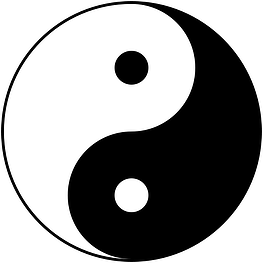



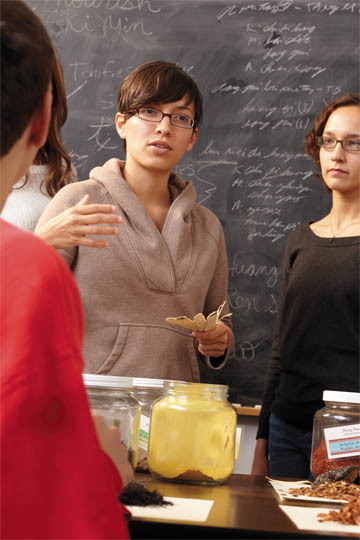.jpg?width=174&height=261&name=classroom_herbs_students-w_(1).jpg)
.jpg?width=174&height=261&name=clinic_lac_(3).jpg)
.jpg?width=174&height=261&name=clinic_supervisor_(6).jpg)
.jpg?width=174&height=261&name=faculty_student_interaction-w_(2).jpg)
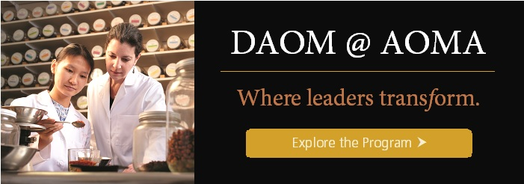
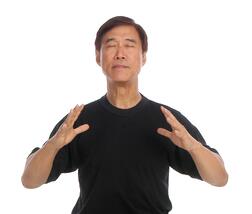
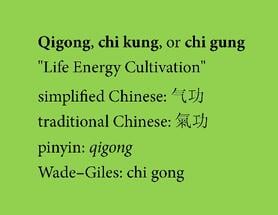 The word Qigong (chi kung or chi gung) is made up of two Chinese words. Qi (pronounced chee) is usually translated to mean the life force or vital-energy that flows through all things in the universe. The second word, Gong (pronounced gung) means work or cultivation. Together, Qigong means life energy cultivation.
The word Qigong (chi kung or chi gung) is made up of two Chinese words. Qi (pronounced chee) is usually translated to mean the life force or vital-energy that flows through all things in the universe. The second word, Gong (pronounced gung) means work or cultivation. Together, Qigong means life energy cultivation.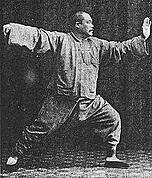 What is Tai Chi?
What is Tai Chi?
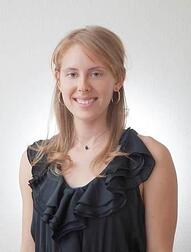 Elaina Stover received a $2,000 scholarship from Trudy McAlister Foundation for her acupuncture program studies at AOMA Graduate School of Integrative Medicine, one of the leading graduate schools of acupuncture and Chinese medicine in the nation.
Elaina Stover received a $2,000 scholarship from Trudy McAlister Foundation for her acupuncture program studies at AOMA Graduate School of Integrative Medicine, one of the leading graduate schools of acupuncture and Chinese medicine in the nation.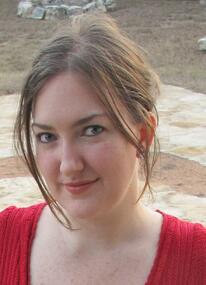 Tara Lattimore is an acupuncture student in AOMA’s MAcOM program and hopes to graduate in 2014. For Tara, choosing to become an acupuncturist was an easy and natural path to take. She says, “My family would get weekly reflexology and acupressure treatments in Indonesia and while we used to be nutritionally challenged and eat dinner in front of the TV, we got into mindful eating after my Dad read Michael Pollen’s
Tara Lattimore is an acupuncture student in AOMA’s MAcOM program and hopes to graduate in 2014. For Tara, choosing to become an acupuncturist was an easy and natural path to take. She says, “My family would get weekly reflexology and acupressure treatments in Indonesia and while we used to be nutritionally challenged and eat dinner in front of the TV, we got into mindful eating after my Dad read Michael Pollen’s 
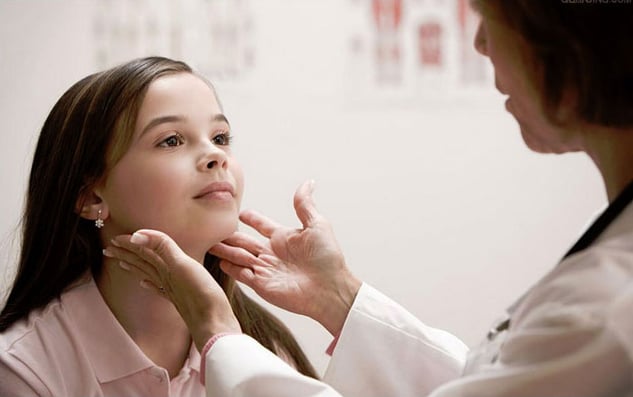


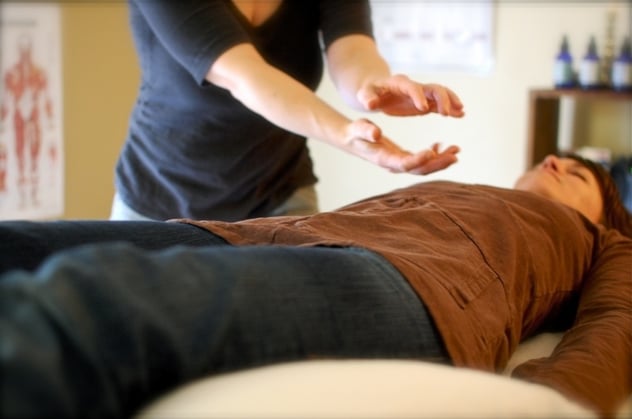
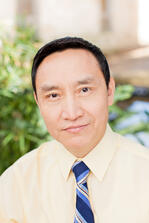 that you don’t need the acupuncture needles – they are just a convenience. Anything you can do with an acupuncture needle can be accomplished just as well with energy. It was one four second moment in a single lecture, but I’ve never forgotten it. It might be the one of the most profound moments of my education. I think of every treatment I give as a Reiki/Medical Qigong treatment. Acupuncture needles are just very convenient antennae which focus and transmit Universal Qi. It has made a huge difference in how I treat patients.
that you don’t need the acupuncture needles – they are just a convenience. Anything you can do with an acupuncture needle can be accomplished just as well with energy. It was one four second moment in a single lecture, but I’ve never forgotten it. It might be the one of the most profound moments of my education. I think of every treatment I give as a Reiki/Medical Qigong treatment. Acupuncture needles are just very convenient antennae which focus and transmit Universal Qi. It has made a huge difference in how I treat patients. an active clinical practice treating patients with conditions such as pain, allergies & respiratory infections, and substance addiction, as well as chronic disorders like arthritis, diabetes, neurological disorders, endocrine disorders, and cardio/circulatory disorders. A certified Usui Reiki practitioner and trainer, she also specializes in relaxation and meditation therapies such as reiki, medical qigong, and guided meditation. Ms. Calhoun is committed to implementing affordable healthcare options using oriental medicine and manages an on-site corporate wellness practice in addition to her private clinical practice. She is the owner and creator of CatsTCMNotes.com and has instructed at AOMA since 2012.
an active clinical practice treating patients with conditions such as pain, allergies & respiratory infections, and substance addiction, as well as chronic disorders like arthritis, diabetes, neurological disorders, endocrine disorders, and cardio/circulatory disorders. A certified Usui Reiki practitioner and trainer, she also specializes in relaxation and meditation therapies such as reiki, medical qigong, and guided meditation. Ms. Calhoun is committed to implementing affordable healthcare options using oriental medicine and manages an on-site corporate wellness practice in addition to her private clinical practice. She is the owner and creator of CatsTCMNotes.com and has instructed at AOMA since 2012.
.jpg?width=230&height=263&name=master_li_junfeng_(4).jpg) healing session and meeting my teachers was more than 10 years. I enrolled in the master’s program
healing session and meeting my teachers was more than 10 years. I enrolled in the master’s program .jpg?width=239&height=216&name=cureville_clinic_2008_(2).jpg) Medical Qigong is one of the oldest branches of traditional Chinese medicine, predating acupuncture by thousands of years. Medical Qigong includes specific physical movements, breathing techniques, and mental imagery that direct the Qi within the body. Ultimately, the practitioner can control the Qi externally to heal others. In China medical qigong is used in hospitals to treat many ailments including tumors, cysts, paraplegia and hemiplegia, muscular atrophy, stress and insomnia, immune deficiency disorders, migraine headaches, and pain.
Medical Qigong is one of the oldest branches of traditional Chinese medicine, predating acupuncture by thousands of years. Medical Qigong includes specific physical movements, breathing techniques, and mental imagery that direct the Qi within the body. Ultimately, the practitioner can control the Qi externally to heal others. In China medical qigong is used in hospitals to treat many ailments including tumors, cysts, paraplegia and hemiplegia, muscular atrophy, stress and insomnia, immune deficiency disorders, migraine headaches, and pain.